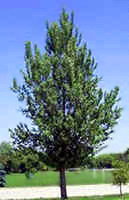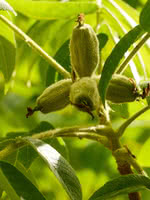Mon-Fri 9am - 5pm Mountain time
Hill Poplar vs Butternut (White Walnut)
Populus x Hill
Juglans cinerea
CUSTOM GROW
Hill Poplar is a hardy, fast-growing tree with a narrow crown. Hill Poplars function well as a privacy screen or windbreak.
This attractive, long-lived shade tree is a great choice for home and commercial consumers alike, as it requires little pruning or maintenance care.
Hill Poplar has largely been replaced by more desirable hybrid poplar varieties that are more resistant to disease.
Butternut is one of the few walnut varieties native to Canada. The nuts are sought after for their mild, sweet, and oily taste. Ensure this tree is planted in full sun and well-drained soil for best results.
Butternut is self-fertile but it has better yields when planted near other butternuts. It can survive in zone 2, but reliably produces nuts in zone 3.
A top CO2 absorbing species. Experts think this tree may help climate change more than others.
Hill Poplar Quick Facts
Butternut (White Walnut) Quick Facts
In row spacing: 2.4 m (8 ft)

